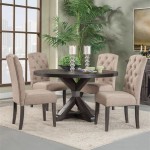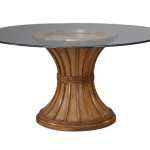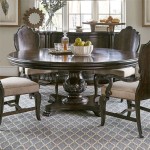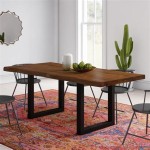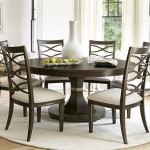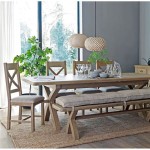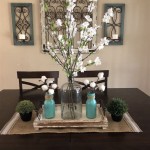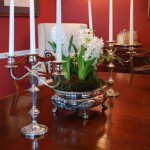Types of Wood for Dining Tables
Choosing the right wood for a dining table is a crucial decision. The wood selected impacts not only the table's aesthetic appeal but also its durability, maintenance requirements, and overall cost. This article explores various wood types commonly used for dining tables, highlighting their key characteristics to assist in making an informed decision.
Solid Wood Options
Solid wood tables are crafted from single pieces or planks of wood, offering a classic, timeless appeal. They are known for their durability and ability to withstand daily wear and tear. Several types of solid wood are favored for dining tables, each with unique properties.
Mahogany
Mahogany is a prized hardwood known for its rich, reddish-brown color and elegant grain patterns. It is highly durable and resistant to rot and decay, making it a popular choice for high-quality furniture.
Key Points: Mahogany
- Rich, reddish-brown color
- Elegant grain patterns
- High Durability
- Rot and decay resistant
Oak
Oak is a strong and durable hardwood with a distinctive grain pattern. It is available in two primary varieties: red oak and white oak. Red oak has a pinkish-red hue and a more open grain, while white oak is lighter in color with a tighter, closed grain, making it more water-resistant. Both are excellent choices for dining tables, offering a robust and classic look.
Key Points: Oak
- Strong and durable hardwood
- Distinctive grain pattern
- Available in red and white varieties
- Water-resistant (white oak)
Maple
Maple is a dense, hard wood known for its smooth, fine grain. It's highly resistant to scratches and dents, making it a practical choice for families with children. Maple comes in a variety of colors, ranging from creamy white to light reddish-brown.
Key Points: Maple
- Dense, hard wood
- Smooth, fine grain
- Scratch and dent resistant
- Variety of colors
Cherry
Cherry is a beautiful hardwood that develops a rich, reddish-brown patina over time. It boasts a fine, straight grain and is prized for its elegant appearance. While durable, cherry is softer than some other hardwoods and may be more susceptible to dents and scratches.
Key Points: Cherry
- Develops rich patina
- Fine, straight grain
- Elegant appearance
- Susceptible to dents and scratches
Walnut
Walnut is a luxurious hardwood with a rich, dark brown color and attractive grain variations. It's strong and durable, adding a touch of sophistication to any dining room. However, walnut is typically more expensive than other hardwood options.
Key Points: Walnut
- Luxurious hardwood
- Rich, dark brown color
- Attractive grain variations
- Strong and durable
Engineered Wood Options
Engineered wood offers a more budget-friendly alternative to solid wood. It is constructed by layering wood veneers and bonding them together with adhesives. While not as durable as solid wood, engineered wood can still provide a beautiful and functional dining table surface.
Key Points: Engineered Wood
- Cost Effective
- Layered Wood Veneers
Plywood
Plywood is a common type of engineered wood made from thin layers of wood veneer glued together. It's relatively inexpensive and offers decent stability. However, it's not as resistant to moisture and wear as solid wood.
Key Points: Plywood
- Inexpensive
- Decent Stability
- Not moisture resistant
MDF (Medium-Density Fiberboard)
MDF is an engineered wood product made from wood fibers and resin. It's smooth, even, and easy to paint or veneer, making it a versatile option. MDF is less expensive than solid wood but is also less durable and more susceptible to moisture damage.
Key Points: MDF
- Smooth, Even surface
- Easy to Paint/Veneer
- Less durable than solid wood
- Susceptible to moisture damage
Particleboard
Particleboard is made from wood chips and resin, offering a low-cost option for furniture. However, it's the least durable of the wood options and is highly susceptible to moisture damage and swelling.
Key Points: Particleboard
- Low-Cost option
- Least durable wood option
- Susceptible to moisture damage
Selecting the appropriate wood type requires careful consideration of factors such as budget, desired aesthetic, and anticipated usage. Understanding the characteristics of each wood type allows informed decisions that lead to a dining table that complements both lifestyle and décor.

5 Best Woods For Dining Tables Picture Guide Cabinfield Blog

Best Wood Types For Your Restaurant Tables Sizing Materials

Wood Table Tops Guide

10 Best Wood For Dining Tables Diningtablesmalaysia Com

The Complete Guide To Dining Tables Types And Styles Cabinfield Blog

Guide To Tables

The Most Durable Wood For Your Perfect Dining Table Cozylant

Options When Ing A Wooden Dining Table

Diffe Types Of Wood And Its Uses Scanteak Singapore

The Complete Guide To Dining Tables Types And Styles Cabinfield Blog

